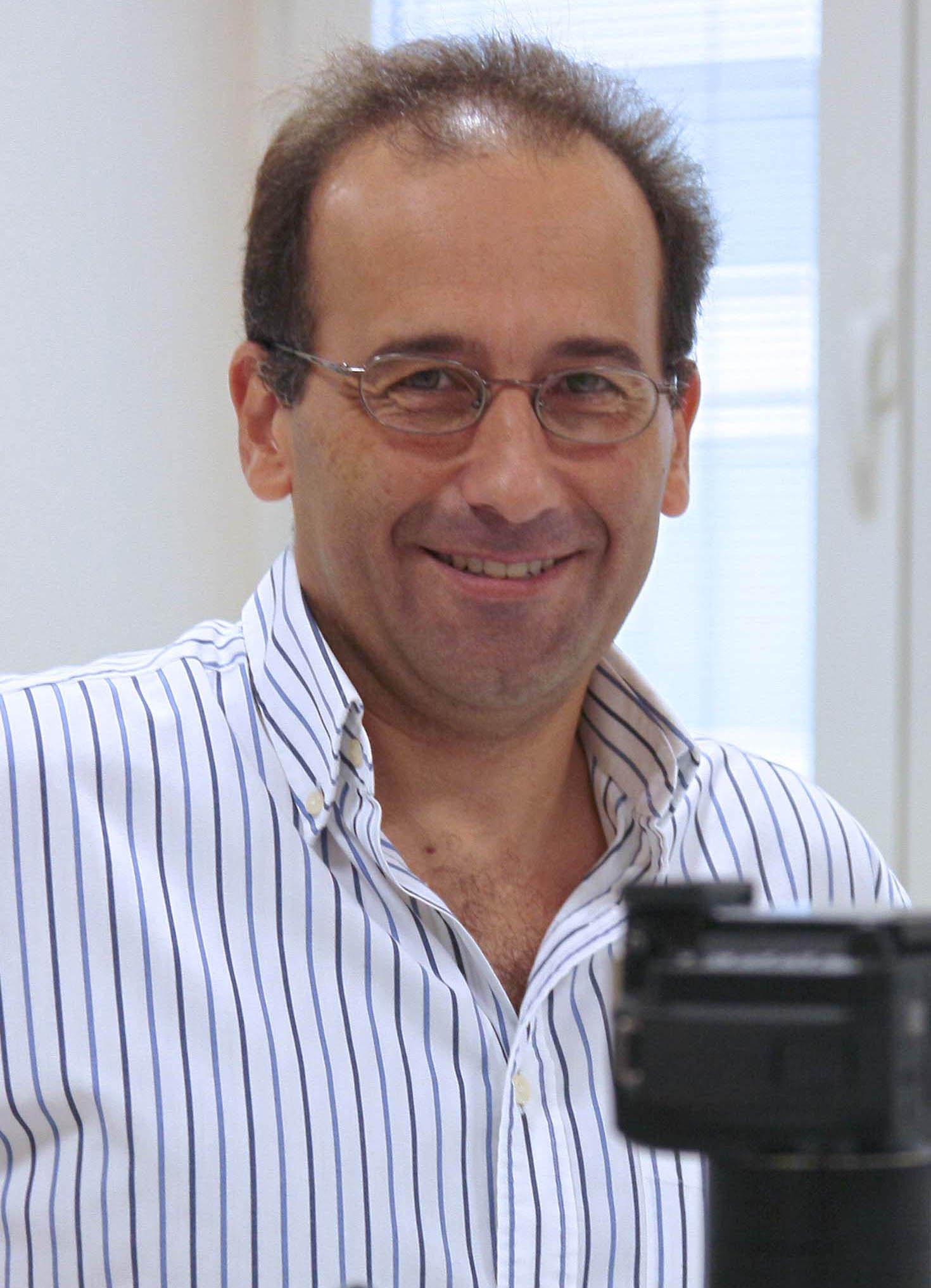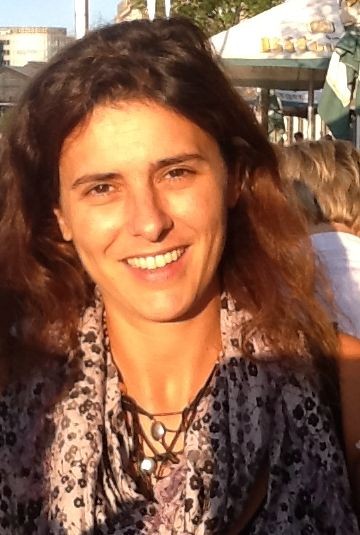
2nd International Electronic Conference on Medicinal Chemistry
Part of the International Electronic Conference on Medicinal Chemistry series
1–30 November 2016
- Go to the Sessions
- Event Details
Welcome from the Chairs
All participants of ECMC-2 are welcome to submit the extended work to the Pharmaceuticals Special Issue "Selected Papers from the 2nd International Electronic Conference on Medicinal Chemistry".
Pharmaceuticals and the Organizing Committee of ECMC-2 congratulate Guilherme Fernandes who received an award for the best presentation at ECMC-2:
Topic: Design, Synthesis and Biological Activity of Furoxan Derivatives Against Multidrug-Resistant Tuberculosis
Presentation: https://sciforum.net/conference/ecmc-2/paper/3525
authored by Guilherme Fernandes, Paula Souza, Chung Man Chin, Fernando Pavan and Jean Leandro Dos Santos
UNESP: Reitoria - Portal da Universidade, Brazil
Welcome from the Conference Chair
The first edition of this series provided the opportunity to more than 25,000 visitors to browse among 55 relevant slide shows and videos, presented by 206 authors from 18 countries. Further to that success, Pharmaceuticals (www.mdpi.com/journal/pharmaceuticals), a peer-reviewed journal edited by MDPI AG, is proud to organize and sponsor the Second International Electronic Conference on Medicinal Chemistry. Contributions dealing with any discipline promoting research in drug discovery and development are welcome.
The Conference will be held online (www.sciforum.net/conference/ecmc-2), from 1–30 November, 2016. It will allow you to share your recent results with scientists of academic and industrial groups from all over the world. Participation, as an author or a visitor, is absolutely free (simply create an account on the home page). Abstracts of the presentations will be published, upon authorization of the authors, in a meeting report after the conference.
On behalf of our dynamic editorial staff and active scientific committee, we warmly invite you to join us during the second edition and we look forward to posting your contributions.
Conference Chair
Dr. Jean Jacques Vanden Eynde
Editor-in-Chief of Pharmaceuticals, Formerly head of the Department of Organic Chemistry (FS), University of Mons-UMONS, 7000 Mons, Belgium
Call for Papers
The conference will cover a wide range of aspects involved in drug discovery and development. A non-exhaustive list of topics that will be considered follows:
- ADMET
- Animal experimentation
- Assay development
- Biomarkers
- Biomolecules
- Biosensors
- Biotechnology
- Chemical synthesis
- Clinical studies and side effects reports
- Combinatorial chemistry
- Drug delivery (including bioconjuguates and prodrugs)
- High throughput screening
- Hit identification
- Imaging techniques
- In silico experiments
- In vitro studies
- Lead optimization
- Omics
- Pharmaceutical analysis
- Scale-up
- Structure-activity relationships
- Target selection
After the conference, proceedings will be edited, free of charge, thanks to the sponsorship of the journal Pharmaceuticals, in a meeting report. Authors of the most outstanding contributions, as selected by the Scientific Committee, will be invited to publish their work as a research article, free of charge, in a Special Issue of the journal Pharmaceuticals.
The Scientific Committee looks forward to receiving contributions in response to this call, and will be glad to provide any further information to interested parties. Questions may be addressed to the chairman via e-mail at Jean-Jacques.VANDENEYNDE@ex.umons.ac.be or the conference secretary at ecmc@mdpi.com.
We thank you in advance for your presence at this conference and your contribution to its success.
Conference Chairs
jean-jacques.vandeneynde@ex.umons.ac.be
Instructions for Authors
Submissions should be done by the authors online by registering with www.sciforum.net, and using the "Start New Submission" function once logged into system.
Researchers interested in attending the conference must submit, on this website and not later than 10 October 2016, an abstract of the work they intend to present.
After the abstract is accepted by the Scientific Committee (1-5 days after receipt of the abstract), the authors will be invited to prepare a full description of their work preferably under the form of a PowerPoint presentation, and to upload it before 20 October 2016 to ensure final check.
The presentations will be accessible on https://www.sciforum.net/conference/ecmc-2 during the time of the conference.
Authors are encouraged to prepare a presentation using the template provided by the Conference. Slides will be displayed directly in the website using Sciforum.net's proprietary slides viewer. They can be prepared in exactly the same way as for any traditional conference where research results can be presented. Slides should be converted to the PDF format before submission so that our process can easily and automatically convert them for online displaying.
Electronic Conference on Medicinal Chemistry PPT template file
Electronic Conference on Medicinal Chemistry Poster template file
The following organization is recommended for your presentation:
- Length of the presentation: no more than 30 slides
- Slide 1 (strictly one slide): Title, Authors’ names, Affiliation(s), email address of the corresponding Author, and, not mandatory, logos of the laboratory and/or institution;
- Slide 2 (strictly one slide): Graphical Abstract, repeat the title of the presentation but avoid other text as far as possible;
- Slide 3 (strictly one slide): Abstract (max 200 words) and 3-5 keywords separated by semicolons;
- Slide 4 and following slides: should contain (in the given sequence) Introduction, Results and Discussion; Conclusions.
- Last slide: Acknowledgments and, not mandatory, logos of sponsors of the work.
MDPI AG, the publisher of the Sciforum.net platform, is an open access publisher. We believe that authors should retain the copyright to their research works. Hence, by submitting a contribution to this conference, the authors retain the copyright of their contribution, but they grant MDPI AG the non-exclusive right to publish this contribution online on the Sciforum.net platform. This means the authors can easily submit their contribution to any scientific journal at a later stage and transfer the copyright to its publisher (if required by that publisher).
List of accepted submissions (42)
| Id | Title | Authors | Poster PDF | ||||||||||||||||||||||||||||||||||||||
|---|---|---|---|---|---|---|---|---|---|---|---|---|---|---|---|---|---|---|---|---|---|---|---|---|---|---|---|---|---|---|---|---|---|---|---|---|---|---|---|---|---|
| sciforum-007477 | Interaction of Zinc(II) and Copper(II) Terpyridine Complexes with Biomolecules | , |

|
Show Abstract |
|||||||||||||||||||||||||||||||||||||
|
Transition metal ions exhibit a unique role in diverse biological activities of proteins by acting as cofactors. In particular, zinc and copper ions modulate enzymes activities as well as many catalytic and oxidative/reductive processes. The kinetics and mechanism of the substitution reactions of dichloro [ZnCl2(terpy)] and [CuCl2(terpy)] (terpy = 2,2′:6′,2′′-terpyridine) with biologically relevant ligands have been studied as a function of nucleophile concentrations at pH 7.38, under pseudo-first-order condition by UV-Vis spectrophotometric techniques. The interactions of Cu(II) and Zn(II) complexes with tripeptide glutathione (GSH) were investigated under pseudo-first-order conditions with respect to the complex concentration. For the substitution process of Zn(II) complex with glutathione (GSH), pre-equilibrium and chelate formation have been noted. The [CuCl2(terpy)] is more reactive than [ZnCl2(terpy)] complex and the second-order rate constants for the first step follow the order of reactivity: GSH > DL-Asp > L -Met > 5’-GMP ~ 5’-IMP for Cu(II) complex, while for Zn(II) the order of reactivity is: DL-Asp > L -Met > GSH ~ 5’-GMP > 5’-IMP. The results are discussed in terms of mechanisms of interactions between metalloproteins and biomolecules. |
|||||||||||||||||||||||||||||||||||||||||
| sciforum-007479 | Antibacterial Activity of Zinc(II) and Copper(II) Terpyridine Complexes | , , |

|
Show Abstract |
|||||||||||||||||||||||||||||||||||||
|
Zinc(ll) and copper(II) complexes with organic molecules are used in clinical medicine, e.g. (i) complex of zinc(ll) acetate with erythromycin is used for ache therapy, (ii) copper chelating agents were developed to treat Wilson disease, an autosomal recessive genetic disorder that causes copper accumulation primarily in the liver. In general, organic ligands can contribute to better transport of metal ions through the lipophillic regions of cell membranes. However, it is also possible that some metal complexes are not able to reach their site of action in sufficient concentration due to their decreased solubility. Antibacterial activity of model [ZnCl2(terpy)] and [CuCl2(terpy)] complexes was tested against seven strains of bacteria. The complexes were more effective against Gram-positive than Gram-negative bacteria. Between complexes, stronger effect was observed for [CuCl2(terpy)] complex. The best effect was exhibited against Sarcina lutea (5 mg/ml). Escherichia coli showed low sensitivity to both complexes. Results of the study of the antibacterial activity suggest an absence of permeability of the complexes through the membrane proteins. |
|||||||||||||||||||||||||||||||||||||||||
| sciforum-008491 | In vitro Anti-leishmanial and Anti-trypanosomal Activity of Hydrazones, Pyrazoles, Pyrazolo[1,5-a]pyrimidines and Pyrazolo[3,4-b]pyridines Synthesized from 6-Substituted-3-formylchromones | , , |

|
Show Abstract |
|||||||||||||||||||||||||||||||||||||
|
Between the functionalized chromones, 3-formylchromone is a highly reactive synthon used in many reactions due to the presence of electron-deficient centers at C-2, C-4 and the C-3 formyl group. Reaction of the -CHO group with nitrogen nucleophiles such as hydrazine and aminopyrazole derivatives has led to the formation of a variety of molecules that have been studied in detail for being of interest to drug discovery. Chromone-3-carboxaldehydes react with aromatic primary hydrazines mainly at the formyl group by a straightforward 1,2-addition to form the corresponding hydrazone, but when the reaction is submitted to prolonged heating, a pyrazole-type structure is produced by a 1,4-addition reaction accompanied by pyrone ring-opening followed by recyclization and proton transfer. On the other hand, reaction of 3-formylchromone with equimolar quantities of aminopyrazole derivatives was shown to afford mainly pyrazolo[1,5-a]-pyrimidines, formed by the above-mentioned cyclization process of an imine intermediate. Led by the biological and pharmacological relevance of the 3-formylchromone derivatives and its interesting chemistry, in this work we present the synthesis of a series of pyrazoles (4a-c), hydrazones (5a-c), pyrazolo[1,5-a]-pyrimidines (6a, 6b) and one pyrazolo[3,4-b]-pyridine (7) and the report on their in vitro anti-leishmanial and anti-trypanosomal activity. Chemical results showed that the formation of regioisomer 7 may arise from an imine intermediary that undergoes 1,4-addition at C-2 by attack of C-4' from the pyrazole instead of the nitrogen atom N-2'. To the best of our knowledge, this is the first report regarding formation of pyrazolo[3,4-b]-pyridines by intramolecular attack of an sp2 carbon atom. The in vitro studies were performed against strains of Leishmania mexicana (bel 21) and Tripanosoma cruzi (DM28). Compounds 5a and 5b showed activity at micromolar level and good selectivity index (SI) with IC50 values of 6.3 (SI = 3.4) and 15 (SI = 1.9) mM for L. Mexicana and 4.1 (SI = 5.2) and 10 (SI = 3) mM for T. cruzi respectively. From the above-mentioned results, compounds 5a and 5b may be considered for further chemical modifications in order to increase their activity as potential antiparasitic agents. |
|||||||||||||||||||||||||||||||||||||||||
| sciforum-008598 | Bioprospecting of Asteraceae Medicinal Plants of Pakistan for their Associated Bioactive Endophytic Actinomycetes for New Drug Targets | , , , , |

|
Show Abstract |
|||||||||||||||||||||||||||||||||||||
|
Since the beginning of mankind, plants have been used as the source of medicinal agents thereby becoming a major course to discovering new drugs. The practice of using traditional medicine is prevalent in Pakistan that has a rich history of herbal plants being used by Hakims in folk medicine (Unani medicine). The Asteraceae family is the largest plant family in Pakistan, with plants of considerable medicinal importance. Endophytes include all organisms that symptomless colonize the living internal tissues of their hosts during a variable period of their lifetime. There they produce a broad variety of bioactive secondary metabolites with unique structure that are advantageous for the plant. Endophytic actinomycetes also colonize the internal tissues of plants without causing any visible changes or damage. They exploit an unusual habitat and considering this, this may enable them to possess the potential to produce bioactive compounds as similar to their host plant. Our study explores the bioprospecting potential related to endophytic actinomycetes of Asteraceae medicinal plants of Pakistan. After isolation and identification the endophytes were screened for their bioactive metabolites potential for new drug targets. This included extensive biological and chemical screening. The bioactive compounds were purified by column chromatography and final identification was done through HPLC-MS and NMR. The purified compounds were observed to be extremely potent with promising antimicrobial potential against major pathogens including algae and fungal strains as well as posessing antioxidant and cytotoxic potential. |
|||||||||||||||||||||||||||||||||||||||||
| sciforum-008619 | In Vitro Cytotoxic Evaluation of New indolo-Triterpene Derivatives, Synthesized from Serjanic Acid | , |

|
Show Abstract |
|||||||||||||||||||||||||||||||||||||
|
Pentacyclic triterpenes represent a very promising and expansive platform for bioactive natural products. Its potential has begun to be exploited by the pharmaceutical industry. The study of these secondary metabolites has been focused mainly in evaluating their activity as potential anti-viral and anti-cancer agents, and in most cases, the increase of the activity is closely related to the chemical modification of the hydroxyl or carboxyl group located at positions C-3 and/or C-28 of the molecule. At present, most of the research on the chemical modification of triterpenes involves the insertion of heterocyclic rings, either through covalent bonds or by ring fusion. Serjanic acid (1) is a natural pentacyclic triterpene found in the fruits of the plant Phytolacca icosandra (Phytolaccaceae). Despite the structural similarities of this compound with other bioactive triterpenes such as oleanolic, boswellic and moronic acids, there are almost no studies on the chemical modification of this acid. Due to this, and based on the biological and pharmacological potential that this compounds might have, in this study we carried out the synthesis, structural characterization and cytotoxic evaluation of six new indolo-triterpene derivatives (8 – 13) from the natural triterpenoid serjanic acid (1). The compounds were synthesized via indolization reactions between the ketones 2 and phenylhydrazines 3 – 7 and their structures elucidated by IR, 1H-NMR, 13C-NMR and HR-MS techniques as: indolo[2,3-b]olean-12-en-28,30-dioic acid-30-methyl ester (8), 5-bromoindolo[2,3-b]olean-12-en-28,30-dioic acid-30-methyl ester (9), 7-bromo-indolo[2,3-b]olean-12-en-28,30-dioic acid-30-methyl ester (10), 4-bromo-indolo[2,3-b]olean-12-en-28,30-dioic acid-30-methyl ester (11), 6-bromo-indolo[2,3-b]olean-12-en-28,30-dioic acid-30-methyl ester (12) and 4,7-dichloro-indolo[2,3-b]olean-12-en-28,30-dioic acid-30-methyl ester (13). All compounds were tested trough the brine shrimp lethality assay to determinate their potential as cytotoxic agents. LC50 values of the new synthesized compounds were between 28.6 and 78.8 micromolar. |
|||||||||||||||||||||||||||||||||||||||||
Exhibition Hall
Full List of Keynotes
 Topic: Highly Conserved WNV Genomic RNA Domains are Potential Targets of
Topic: Highly Conserved WNV Genomic RNA Domains are Potential Targets of
Antiviral RNA Aptamers
Dr. Alfredo Berzal-Herranz
Department of Molecular Biology, Instituto de Parasitología y Biomedicina“López-Neyra,
CSIC, PTS Granada, Av del conocimiento s/n, 18016 Granada, Spain
Website: https://www.ipb.csic.es/departamentos/aberzalh_ingles.html?depto=MolecularBiologyDepartment
 Topic: Studying the Influence of Stereochemistry in P-gp Modulation: Case-Study
Topic: Studying the Influence of Stereochemistry in P-gp Modulation: Case-Study
with Thioxantones
Dr. Maria Emília de Sousa
Laboratory of Organic and Medicinal Chemistry, Faculty of Pharmacy, University of Porto,
Rua de Jorge Viterbo Ferreira, 228 4050-313 Porto, Portugal
Website: https://sigarra.up.pt/ffup/funcionarios_geral.formview?p_codigo=373844
Conference Organizers
Dr. Jean Jacques Vanden Eynde
Former Head of the Department of Organic Chemistry,
University of Mons-UMONS,
Belgium
Editor-in-Chief of Pharmaceuticals
Scientific Advisory Committee
Prof. Dr. Michael Gütschow
Pharmaceutical Institute, University of Bonn, An der Immenburg 4, 53115 Bonn, Germany
Website: https://www.pharma.uni-bonn.de/www/pharmchem1/gutschow-laboratory
Interests: synthetic organic chemistry; enzyme kinetics; mechanism-based enzyme inhibitors; inhibitors of proteases
Prof. Dr. Tien L. Huang
Division of Basic and Pharmaceutical sciences, College of Pharmacy, Xavier University of Louisiana, 1 Drexel Drive, New Orleans, LA 70125, USA
Website: http://www.xula.edu/cop/profiles/huang.php
Interests: medicinal chemistry; organic chemistry; anti-opportunistic agents; anti-parasitic agents; prodrugs
Prof. Dr. Klaus Kopka
Division of Radiopharmaceutical Chemistry, Research Program Imaging and Radiooncology, German Cancer Research Center (dkfz), Im Neuenheimer Feld 280, D-69120 Heidelberg, Germany
Website: http://www.dkfz.de/en/radiochemie/index.php
Interests: radiopharmaceutical sciences; labeling chemistry; medicinal chemistry; PET tracers; radiopharmaceuticals for diagnostics and endoradiotherapy; small molecules; peptides; antibodies and derivatives thereof
Prof. Dr. Joachim Jose
PharmaCampus Institute of Pharmaceutical and Medicinal Chemistry, Westfälische Wilhelms-Universität, Corrensstr. 48, 48149, Muenster, Germany
Website: https://www.uni-muenster.de/Chemie.pz/forschen/ag/jose/index.html
Interests: autodisplay; assay development and inhibitor testing; whole cell biocatalysts for synthesis of drugs and building blocks; directed evolution of enzyme inhibitors and biocatalysts; biosensor development and diagnostic tools
Prof. Dr. Peter A. Leggat
College of Public Health, Medical and Veterinary Sciences, Division of Tropical Health and Medicine, James Cook University, Townsville Qld 4811, Australia
Website: https://research.jcu.edu.au/portfolio/peter.leggat/
Interests: occupational health and safety; injury prevention; pharmaceuticals; aerospace medicine; geographic and travel medicine
Dr. Annie Mayence
Associate Editor of Pharmaceuticals
Formerly professor at the Haute Ecole Provinciale de Hainaut-Condorcet, 7330 Saint-Ghislain, Belgium
Website: http://www.cilbiotech.be/jj
Dr. Maria Emília de Sousa
Laboratory of Organic and Medicinal Chemistry, Faculty of Pharmacy, University of Porto, Rua de Jorge Viterbo Ferreira, 228 4050-313 Porto, Portugal
Website: https://sigarra.up.pt/ffup/funcionarios_geral.formview?p_codigo=373844
Interests: medicinal chemistry; organic synthesis; heterocycles, P-glycoprotein; anticancer; anticoagulants; chiral drugs
Organizing Committee
Dr. Shu-Kun Lin, MDPI AG, Basel, Switzerland
Dr. Franck Vazquez, MDPI AG, Basel, Switzerland
Ms. Changzhen Fu, MDPI AG Branch Office, Wuhan, China
Ms. Flora Li, MDPI AG Branch Office, Wuhan, China
List of Keynotes & Videos
[A011] Antimicrobial Peptide Prodrugs and Mimetics
Related papers
[A037] Phytosterols: a Healthy Alternative to Cholesterol?
Related papers
B. Posters Session
In this section, posters can be presented stand-alone, i.e., without an accompanying PPT presentations. Posters will be available online on this website during and after the e-conference. However, posters will not be added to the proceedings of the conference.

.png?1767296873)






















